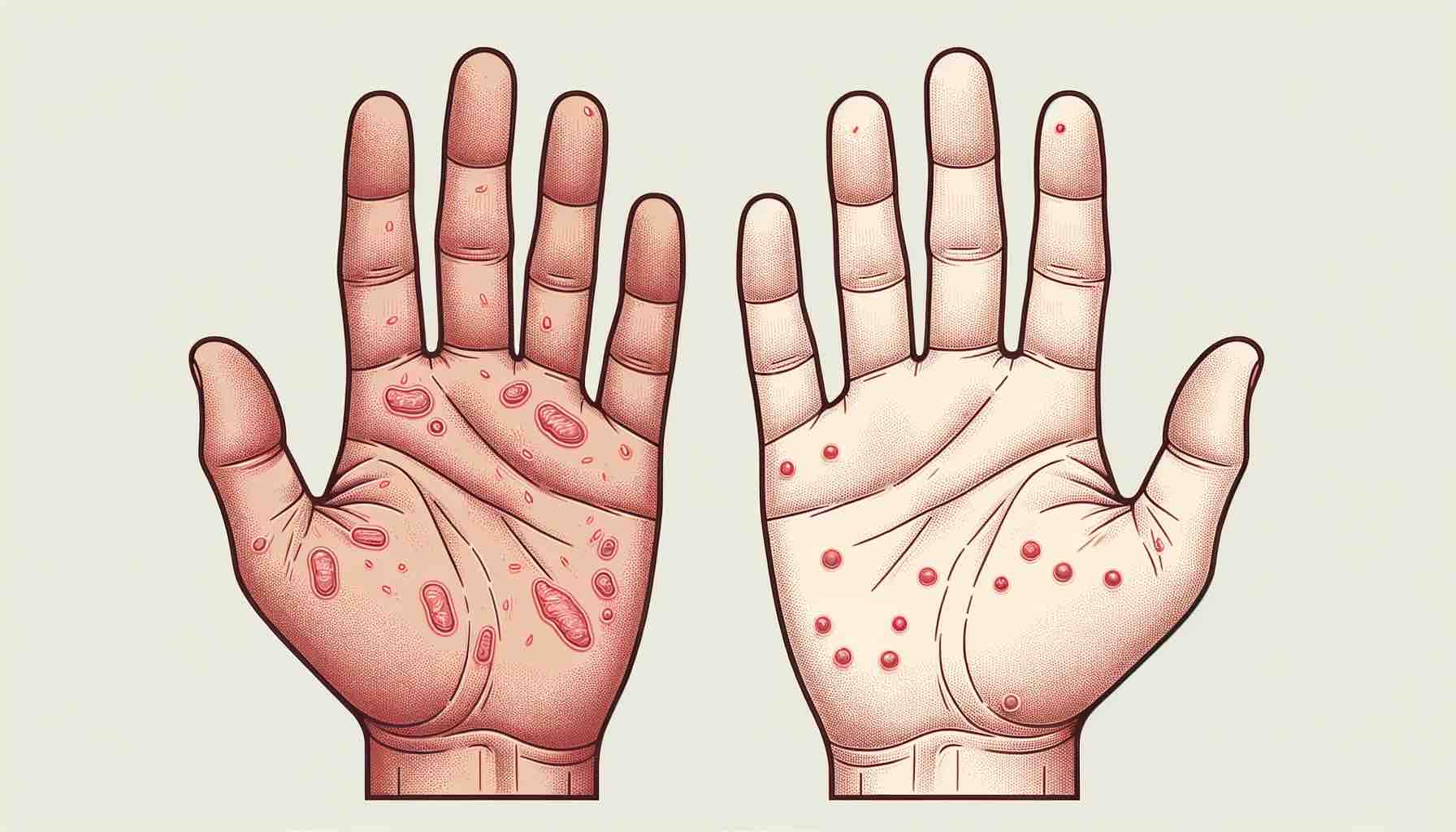
In the vast universe of dermatological conditions, palmar psoriasis and its various manifestations occupy a unique and challenging space. These conditions, often cloaked in discomfort and misunderstanding, require a nuanced approach, blending medical insight with practical everyday strategies. This guide aims to be a beacon, illuminating the path towards better understanding and management of these conditions, making the journey a bit more navigable for those seeking relief and clarity.
Introduction to Palmar Psoriasis and Its Variants
Palmar psoriasis is not a solitary condition; it brings along a family of related conditions, each with its own characteristics and challenges. From the red, scaly patches emblematic of classic palmar psoriasis to the pustules that define its more complex variants, understanding each aspect is the first step towards effective management.
Understanding the Basics
- Palmar Psoriasis: This condition primarily unveils itself through red and scaly patches that grace the palms, narrating the story of an autoimmune battle happening beneath the skin’s surface.
- Palmar Plantar Pustulosis and Pustular Psoriasis: These siblings in the psoriasis family are marked by the presence of pustules or blisters, adding a layer of complexity to the narrative of symptoms and management strategies.
Symptoms: The Unwanted Guests
- Redness and Scaling: These symptoms are the uninvited guests that often accompany palmar psoriasis, making their presence known through inflamed and rough patches of skin.
- Pustules or Blisters: Particularly prevalent in the pustular variants, these symptoms introduce a painful and challenging dimension to the condition.
Practical Strategies: Tools for the Journey
- Regular Moisturization: An essential ally in managing the landscapes of dryness and scaling.
- Avoiding Irritants: A strategy that involves identifying and sidestepping potential triggers, guarding against exacerbation of symptoms.
- Dietary Considerations: Nourishing the body with foods that may help soothe the symptoms, as explored in resources like this article.
Conclusion: Charting the Path Forward
Embarking on the journey through palmar psoriasis and its variants is a voyage of discovery, learning, and adaptation. With a compass forged from knowledge and practical insights, and guided by resources like this comprehensive guide, the path towards managing these conditions becomes clearer, aiming towards a horizon of relief and improved quality of life.
FAQs for the Post
- What distinguishes palmar psoriasis from other types of psoriasis? Palmar psoriasis specifically targets the palms of the hands, manifesting as red, scaly patches or plaques. Its location and the unique challenges it presents, such as frequent contact and friction, make it distinct from other types of psoriasis.
- How does palmar plantar pustulosis differ from basic palmar psoriasis? Palmar plantar pustulosis is characterized by the emergence of pustules or blisters on the palms and soles, adding a layer of complexity in terms of symptoms and treatment strategies compared to the more straightforward presentation of palmar psoriasis.
- What are some effective management strategies for palmar psoriasis? Regular moisturization, avoidance of known irritants, and the use of topical treatments such as corticosteroids are among the key strategies that can help manage the symptoms of palmar psoriasis effectively.
- Can dietary changes impact the severity of palmar psoriasis symptoms? Dietary modifications, such as the inclusion of anti-inflammatory foods and the avoidance of potential allergens, can play a role in managing the inflammation and discomfort associated with palmar psoriasis.
Blog Tags for the Post
palmar psoriasis, palmar plantar pustulosis, pustular psoriasis, skin conditions, dermatology, symptom management, treatment strategies, dietary impact, skincare routine










